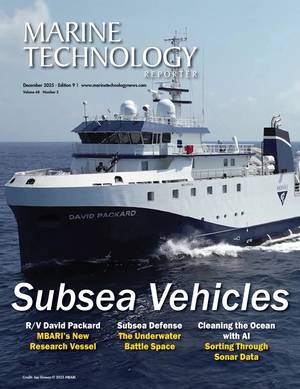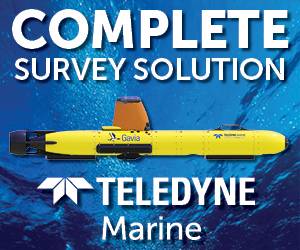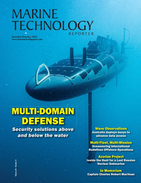
2025: Fascinated with Subsea Discovery
renewables; dredging to subsea cabling; with emerging opportunities including carbon capture and storage.The catastrophic implosion of the Titan submersible that killed five people in 2023 maintained reader attention in 2025. The Titan vanished during a descent to the Titanic wreck on a tourist expedition, losing contact with its support ship. After a tense four-day search, its shattered remains were discovered strewn across the seabed 1,600 feet (488 meters) from the bow of the wreck.It was a tragedy that could have been prevented, a US Coast Guard investigative board found in August, calling out
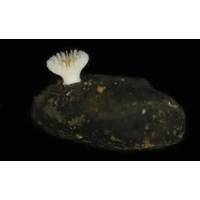
New Deep-Sea Coral Found on Nodules Targeted for Mining
for the coral via sun-dependent photosynthesis, Deltocyathus zoemetallicus survives in total darkness. This species is an azooxanthellate scleractinian, meaning it lacks an algal partner to provide nutrients, instead feeding on particles that are drifting through the water.Using box corers during three expeditions onboard the OSV Maersk Launcher and one expedition on board the RRS James Cook, scientists carefully collected the new coral specimens and their nodule homes. The team then analyzed the animals using high-resolution imaging and 3D micro-CT scanning to confirm that it represents a species new to

NOAA-Led Expedition Maps Cook Islands’ Exclusive Economic Zone
(NOAA) through its Ocean Exploration program and supported by a grant to the Ocean Exploration Cooperative Institute (OECI), marks a milestone in strengthening U.S.-Cook Islands partnerships in marine resource management.Guided by priorities set by the Cook Islands Seabed Minerals Authority (SBMA), the expedition employed remotely operated vehicles, advanced mapping technology, and telepresence to collect critical data on abyssal plain habitats. Seven Cook Island-based scientists joined the mission, which included imaging and cataloging seabed and biological compositions, providing valuable insights into
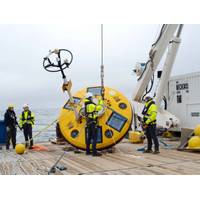
Scientists Collect Biodiversity Data in Argentina’s Submarine Canyons
Scientists on an Argentinian-led expedition onboard Schmidt Ocean Institute’s R/V Falkor (too) deployed an array of technologies to collect the most robust data set available about how the major Malvinas ocean current interacts with submarine canyons and influences Argentina’s renowned marine biodiversity. Their goal was to better understand the region’s plankton blooms, the basis of the food web that sustains the Argentinian fishing industry. These plankton blooms are so large that they can be observed from space. The expedition was led by Dr. Silvia Ines Romero of Argentina
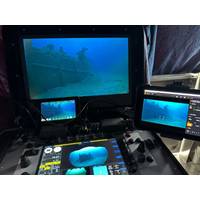
Watch: ROV Exploration of “Freshwater Everest”
the ROV’s ability to operate in challenging, low-light environments.The livestream is hosted aboard the research vessel Blue Heron and brings together award-winning filmmakers Yvonne Drebert and Zach Melnick from Inspired Planet Productions, along with freshwater ecologist Dr. Michael Rennie.The expedition seeks to answer a fundamental ecological question: Is Superior Shoal to freshwater life what seamounts are to ocean life — critical refuges of abundance and biodiversity
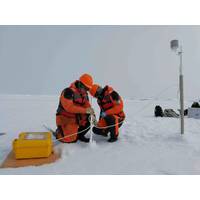
Autonomous Temperature-Sensing Technology Monitors Snow, Ice Conditions
providing data for climate researchers, avalanche forecasters, hydroelectric power companies, engineers, transportation and logistics planners and flood risk evaluators. Data from SIMBA units has contributed to more than 70 peer-reviewed research papers to date and 28 units were used on the MOSAiC expedition, billed as the largest polar expedition of all time.In Canada, SIMBA units have been deployed as part of The Churchill River Monitoring project, which was established after a flood caused by an ice jam at the outlet into Goose Bay required the evacuation of a nearby community. The units autonomously
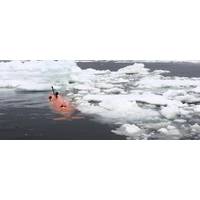
University of Gothenburg to Buy New AUV
The University of Gothenburg will buy a new underwater vehicle to replace Ran, the AUV that was lost under a glacier in Antarctica in 2024.A large donation means that researchers can plan for new expeditions.The autonomous underwater vehicle (AUV) Ran contributed to groundbreaking research, education and technological development for six years. The most groundbreaking results were achieved during risky missions under the floating glaciers of Antarctica. It was also during one such mission that Ran was lost in January 2024.“Thanks to Ran, we became the first researchers in the world to enter

Ponant Promotes Cruising with Scientists
Institution (WHOI) comes at a time when access to remote areas such as polar regions has been challenged by cuts to science funding.Since 2021, Ponant Explorations Group has hosted more than 230 scientists across its fleet. Through this new alliance, WHOI scientists will now join select Ponant expeditions—many aboard the luxury icebreaker Le Commandant Charcot—to conduct fieldwork, test emerging technologies, and share their expertise through interactive guest programming.The company will also provide grant funding to help support WHOI’s polar science work.“At Ponant Explorations

Sir Ernest Shackleton’s Endurance Expedition Exhibit Opens at the Scottish Maritime Museum
A powerful exhibition exploring Sir Ernest Shackleton’s legendary Antarctic expedition aboard the Endurance (1914-1917) has opened at the Scottish Maritime Museum on Irvine Harbourside.Fortitudo by Italian artist Paola Folicaldi Suh features scenes and portraits which vividly reimagine the extraordinary survival story of Shackleton and his crew who left Britain on the Imperial Trans-Antarctic Expedition or ‘Endurance Expedition’ in 1914. Although Shackleton failed to complete the first overland crossing of Antarctica via the South Pole, all 26 crew members survived despite two

 December 2025
December 2025
